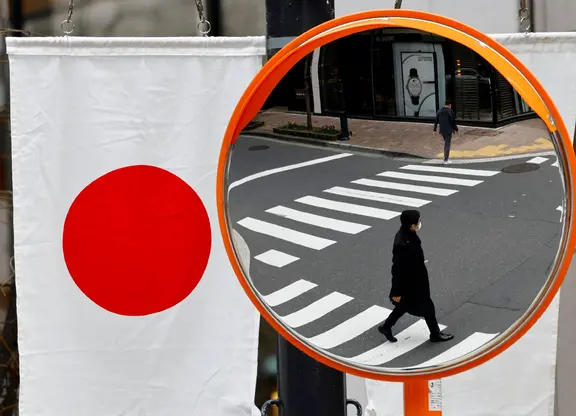Samsung's S9 was always going to be the only Android phone that could compete with the hype and fanfare around Apple's launch of the iPhone X - but now that both mobiles are out, how do they compare?
Immediately the £999 iPhone X is considerably more expensive than the £739 smartphone offered by Samsung, but both come as premiums to their previous generations.
This hasn't manifested in a size change for Samsung. Just like the S8, the S9 measures 5.8in (14.6cm) from corner to corner - the standard method for measuring rectangular smartphones.
The iPhone X has a 5.8in display too, well up on the 4.7in display on the iPhone 8 - and even larger than the iPhone 8 Plus, which measures only 5.5in from corner to corner.
The iPhone's "edge-to-edge" screen had been highly anticipated, but the "notch" in its front was widely seen as aesthetic misstep.
A man's hairline resembles the iPhone X's 'notch'.
The S9 is the sleeker phone, and Samsung's design team have finally done away with the rear location of its fingerprint sensor, which constantly caused the phone's users to smudge the lens.
A fingerprint sensor is completely missing from the iPhone X, however, which is 11 grams heavier than the rival smartphone.
In other areas, Samsung retains the classical port for a headphone jack - something which iPhone users have been missing for a number of models.
Following Apple's lead, the Samsung S9 also aims to offer a facial recognition-based unlocking system.
Researchers have found that Samsung's facial unlocking mechanism doesn't function as well as Apple's - a detail seemingly confirmed by Samsung in not allowing the security feature to be used with Samsung Pay.
The S9 is the flagship Android for the next generation of Android's augmented reality (AR) capabilities - a subject of great delight and investment for most vendors.
Both the Samsung S9 and the iPhone X let users create animated emojis.
Last August, both Google and Apple showcased new AR tools available for Android and iOS devices, allowing users to digitally superimpose objects onto the world around them through their phones.
Apple's chief executive Tim Cook described the iPhone X as "the future of smartphones", and stressed in August how AR was "big and profound" and was "one of those huge things that we'll look back at and marvel on the start of it."
Meanwhile, marvel indeed at both the Samsung S9's and the iPhone X's feature allowing users to animate emojis with their facial expressions.
Apple calls this feature an "animoji" while the S9 lets users create an "AR emoji" - although the AR emojis are closer to avatars which the S9 generates from a photograph of the user's face.
(SKY NEWS)
 简体中文
简体中文





















